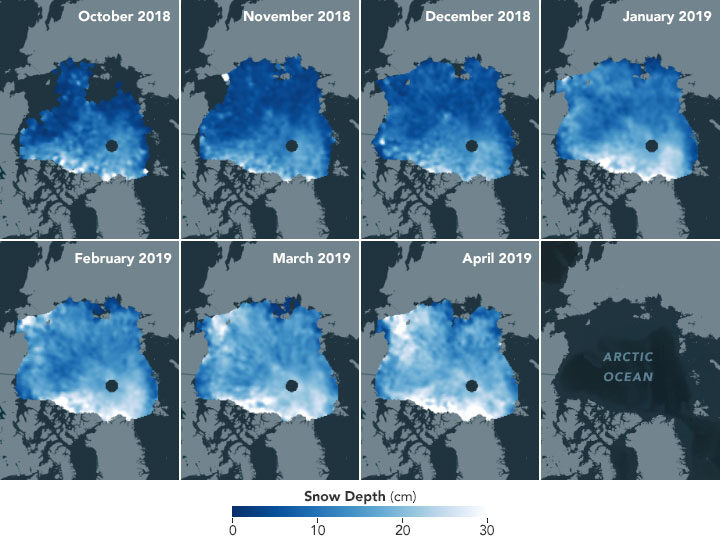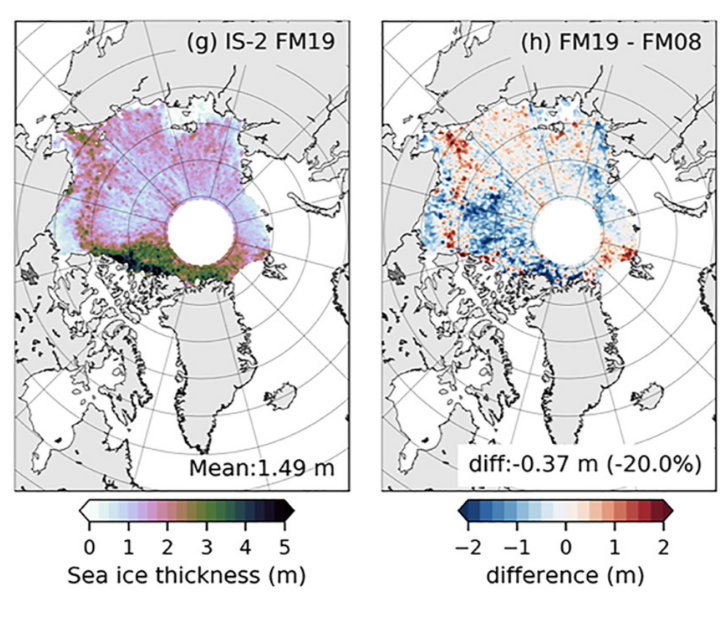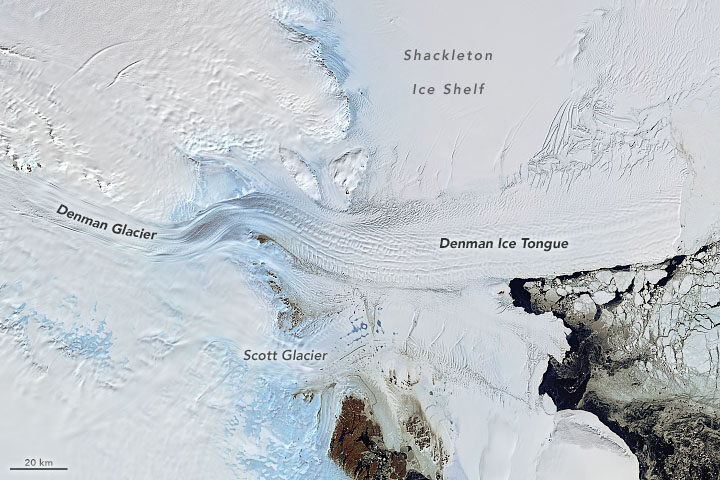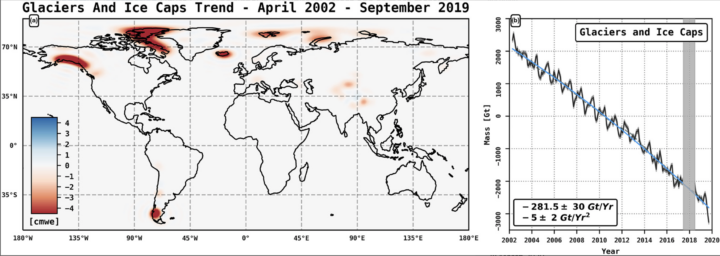A series of research papers in recent months shows that we know more than ever before about the ice on our land and covering the seas. In case you missed them, here’s a look at some of the notable findings. Many are based on data from NASA’s ICESat-2 satellite, which just over a year ago released to the public more than a trillion new measurements of Earth’s height. With these and other satellite data scientists have …
… Produced the First Satellite-Based Maps of Snow Depth on Sea Ice
Earlier this month we wrote about how the data were used to make the first maps of snow depth on sea ice. The research, published in JGR Oceans, shows how elevation measurements from ICESat-2 can be combined with data from ESA’s Cryosat-2 to get maps like these:

The snow layer is an important component of the sea ice system, affecting how the ice cover grows and melts. With additional years of observations, such maps could help scientists assess how climate change affects precipitation and the accumulation of snow.
… Estimated the Thinning of Arctic Sea Ice
In another paper, scientists described how they used ICESat-2 data and a new model to estimate the thickness of Arctic sea ice. Comparing the new estimates to those made with the first ICESat mission (2003-2009), they found that sea ice in winter has thinned by as much as 20 percent in the past 11 years. The bottom-left map shows the February-March 2019 thickness estimate; the bottom-right map shows how much thickness has changed between 2008 and 2019. Read more about that study here.

… Measured Ice Sheet Losses Spanning 16 Years
Other research outlined the changes happening to ice on land. In a paper published April 2020 in Science, scientists chronicled 16-years of change to the Greenland and Antarctic ice sheets.
ICESat-2 data from 2019 showed that Greenland’s ice sheet had lost an average of 200 million metric tons of ice per year since the original ICESat started collecting data in 2003. Antarctica’s ice sheet lost an average of 118 million metric tons of ice per year during the same period.
But the beauty of the new measurements from ICESat-2 is that scientists can show details of where the changes are happening. Not only can they discern where the ice sheets have been thinning or thickening, but they can see changes on the scales of individual glaciers and, for the first time, across floating ice shelves. Read this story for more details, or check out the video below.
… Detailed the Retreat of a Potentially Unstable Glacier in East Antarctica
The ice in East Antarctica is generally thought to be less vulnerable than the ice in West Antarctica and the Antarctic Peninsula. Research in 2018, however, pointed to a number of glaciers along East Antarctica’s coastline that appear to be destabilizing. A new paper published March 2020 detailed the changes happening to Denman Glacier. The stability of Denman is a concern because this one glacier in East Antarctica holds as much ice as half of West Antarctica.
Scientists used satellite radar data from the Italian COSMO‐SkyMed constellation to detect the retreat of the glacier’s grounding line—the point at which a glacier last touches the seafloor and begins to float. If the grounding line continues to retreat, warm seawater could eventually penetrate upstream and beneath the glacier, continuing to melt it from below and destabilizing it. Read the full story here.

… Observed a Sixfold Increase in Ice Loss from Antarctica & Greenland Since the 1990s
Sometimes multiple satellites can tell you more than a single satellite. In research published in Nature, scientists used observations from 11 satellite missions to calculate losses from the Antarctic and Greenland ice sheets since the 1990s. They show that the ice sheets together lost 81 billion metric tons per year in the 1990s, compared with 475 billion metric tons of ice per year in the 2010s—a sixfold increase.
The meltwater associated with the ice loss boosted global sea levels by 17.8 millimeters (0.7 inches), according to a story about the research.
… Calculated Ice Melt Leading to Regional Freshwater Depletion
Some losses are directly affecting the freshwater resources available to people. In the 20thcentury, the largest contributors to sea level rise came from melting ice caps and glaciers in Alaska, the Canadian Arctic Archipelago, the Southern Andes, High Mountain Asia, the Russian Arctic, Iceland, and Svalbard.
Researchers used the GRACE and GRACE-FO satellites to determine that these seven regions lost (on average) more than 280 billion metric tons of ice per year between 2002 and 2019. The losses contributed 13 millimeters (0.5 inches) to global sea level rise. The losses also deplete a freshwater resource for communities that depend on the ice to provide meltwater for agriculture and drinking water. You can read more about the research, published April 2020 in GRL, in this story.





Thanks for Valuable researches and nice article.
One question: -0.37 lost of 1.49 m ice sheet in Arctic Sea is approximately 25%. Why did you estimated it as 20%?
Did I misunderstand sth?
Kind regards.